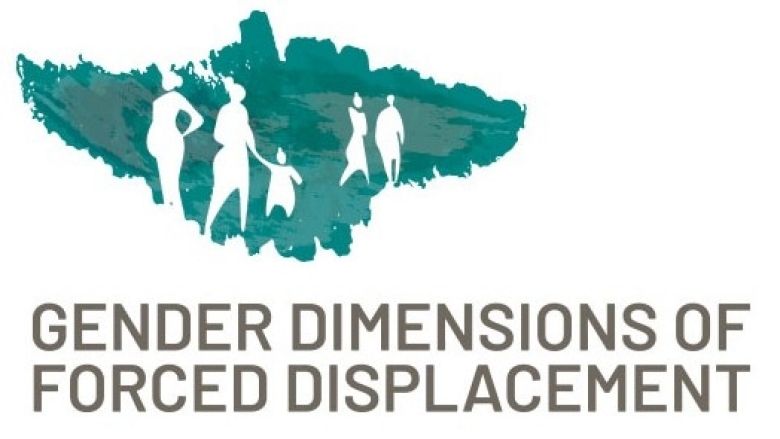The World Bank Group’s year-long Accelerate Equality initiative explores the important progress made and lessons learned over the last 10 years in closing gender gaps and promoting girls' and women's empowerment, and drives for transformative change in the future.
It provides an opportunity to showcase successes, learn, and develop ideas and further momentum for the future of gender equality and women’s leadership, while taking stock of remaining challenges and strengthening partnerships in the quest to #AccelerateEquality.
Progress has been made, but is slow
10 years ago, the World Bank Group published the World Development Report 2012: Gender Equality and Development (WDR2012). Over the last decade, progress has been achieved in several key areas. Maternal mortality has decreased by around 10 percent, and girls’ enrollment in secondary school has increased by 5 percent. The Women Business and the Law index shows that women’s economic rights have improved, and there are now more women than ever before in national parliaments across the globe.
However, progress has been slow in many important domains. Female labor force participation rates fall well below 40 percent in low-income countries. Significant gender wage gaps persist, and, in many countries, women are still clustered into sectors and occupations typically associated with lower profits, absence of work contracts, and lack of protection. The gender digital divide threatens women and girls’ access to quality healthcare, education, jobs, and civic participation. Women continue to be responsible for the bulk of child and elder care in the home, and remain underrepresented as leaders, especially at the highest levels. Globally, violence against women and girls' remains widespread.
It is increasingly clear that gender-unequal social norms prevent women from becoming equal citizens, leaders, and agents of change. Such social norms prevent women from seeking wage employment outside the household, aspiring to jobs in male-dominated occupations and sectors, and avoiding early marriage and childbearing so that they can complete their education.
Mounting debt and the pandemic have made things worse
Prior to the COVID-19 crisis, fiscal pressures were mounting, constraining opportunities to help close gender gaps. The World Bank’s Global Waves report notes that before the pandemic, half of all low-income countries were already in debt distress or at a high risk of it. Since the pandemic began, debt levels in low- and middle-income countries have surged, resulting in many countries facing a reduction in priority expenditures, including programs that support girls’ and women’s empowerment.
The COVID-19 crisis has compounded challenges for women and girls', exacerbating barriers to participating in the economy and public life, and intensifying a parallel pandemic of violence against women and girls'. In Latin America and the Caribbean, women are 44 percent more likely than men to lose their jobs, and an estimated 11 million girls' might not return to school due to the COVID-19 pandemic’s disruption. UN Women reports that since the pandemic began, violence against women has intensified.
The available data on adolescent girls’ return to school are concerning. A survey of nearly 4,000 adolescents living in urban settlements and rural counties in Kenya found that 16 percent of vulnerable adolescent girls' compared to 8 percent of adolescent boys did not return to school when schools reopened in the country in January 2021. In Bangladesh, 53 percent of girls' reported spending less time on education than before the COVID-19 lockdown, and 93 percent reported more time spent on household chores and childcare. Among girls' who did not return to school, 27 percent reported pregnancy as the reason for not returning.
Investing in people offers a way forward
Protecting and investing in girls', women, and people of all gender identities will help address these challenges and enable all people to achieve their full potential, building human capital and more inclusive and equitable societies. On average across countries, long-run GDP per capita would be almost 20 percent higher if gender employment gaps were to be closed. Ensuring all people have access to quality education, health services, and safety nets also makes people and societies more resilient to shocks caused by health emergencies, climate change, or economic crises.
The urgency of the COVID-19 crisis demands bold solutions, but also presents an unprecedented opportunity to build back stronger, so that gains made in closing gender gaps can be sustained even throughout shocks and crises such as the pandemic. Close attention should be paid to the needs of women and girls' and other gender groups facing multiple forms of disadvantage, including poverty, migrant status, ethnicity, race, disability, and location.
Empowering women builds resilience against climate change and displacement/fragility.
The effects of climate change and the corresponding changes in national policies and development strategies will affect economic opportunities for both men and women.
Engaging women is key to development, including climate action. Women’s leadership and empowerment, in conjunction with girls’ education, family planning, reproductive and sexual health and reduced child marriage, can facilitate the transition to low-carbon economies, help improve resource use, and assist in lowering environmental damage and land fragmentation, as well as increase resilience.
Recent research has revealed a strong link between fragility, forced displacement, and gender outcomes. At the end of 2020, there were over 80 million forcibly displaced persons worldwide, doubling from 40 million in 2010. While men and women are impacted differently by conflict and displacement, there is scope to move beyond considerations of gender-based vulnerability toward empowering women and girls' to contribute to increased community resilience.
Transformative change toward gender equality, requires a concerted effort. This involves further investments, further changes in law and policies, further interventions to shift social and gender norms, and further audacity to change power relations between men and women.
Building on the evidence and the momentum, now is the time to accelerate action towards gender equality – #AccelerateEquality!
Last Updated: Feb 18, 2022









